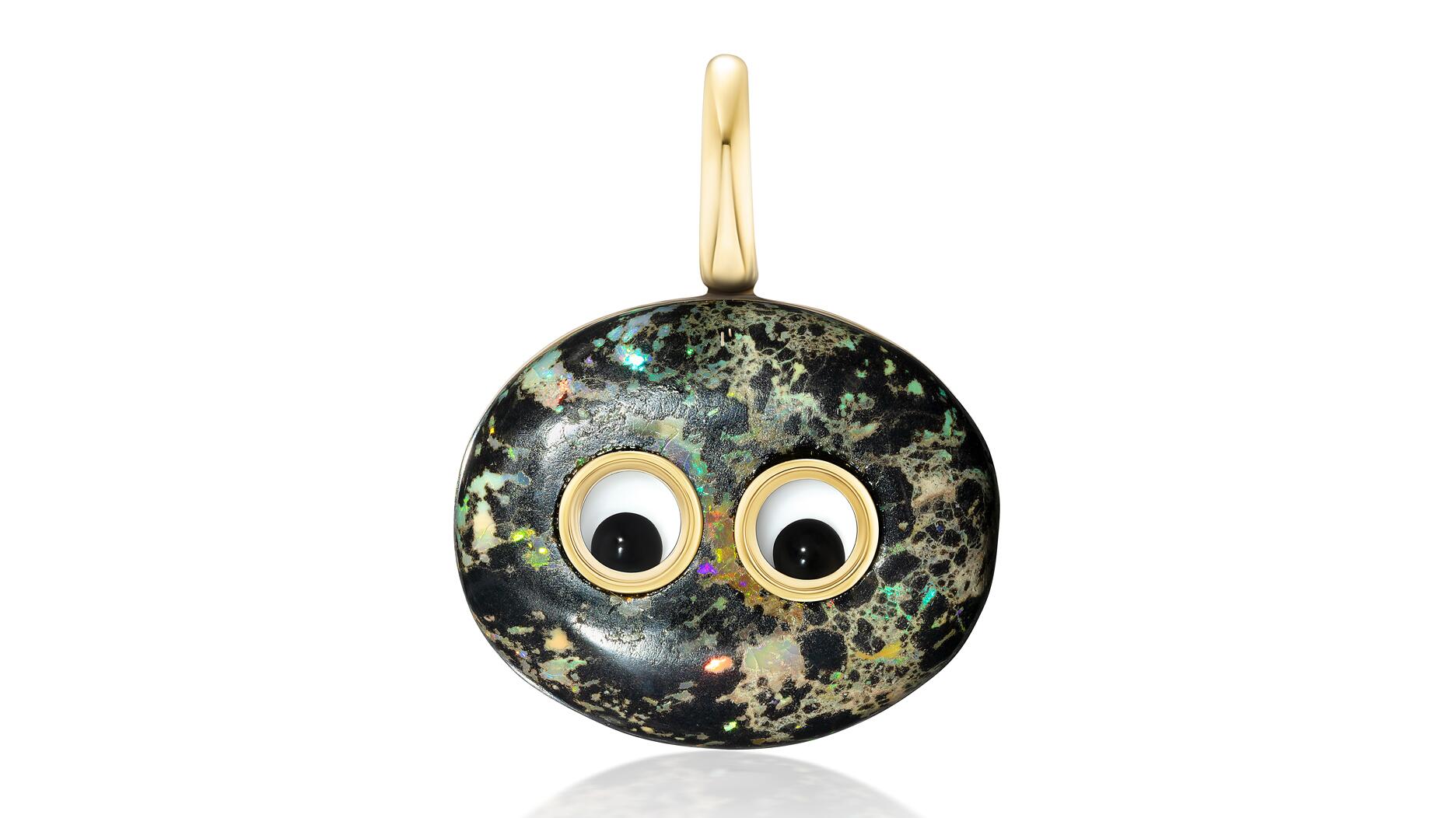The luxury goods company said founder Ippolita Rostagno will remain at the brand’s helm.
50 Jewelers/50 States: What I Learned
Associate Editor Ashley Davis breaks down what she’s learned from the jewelers profiled in the popular series.

It’s one thing to talk about retail trends in general and another to assess what those trends mean to a local, independently owned store.
This year, I wanted to do the latter, speaking to one jewelry store in each of the 50 states around the country about consumer trends and what their greatest challenge is today.
From Alabama to Wyoming, and everywhere in between, I noticed some definite trends among jewelers that were immune to geographic boundaries. Chalk it up to the digital age, but I’ll assert that the easy access to information has made retail trends more homogenous nationwide today than in years past.
Here are some key things I learned from my many conversations with our nation’s jewelers.
1. The Halo is Reaching Its Tipping Point
A halo engagement ring setting is still extremely popular around the country, but many jewelers are just starting to see it wane in favor of less decorative styles like a simple, prong-set diamond solitaire ring.
A few store owners with whom I spoke declared that the halo is on the decline, while others said that it’s still their No. 1 seller, but other styles are making more of a comeback--either way, consumers have something more than just a halo in mind.
2. Millennials (Like Me) Are Really Looking at Reviews
To choose a store to profile for each state I sometimes asked for referrals from my National Jeweler and Jewelers of America team but, more often than I not, I looked at reviews online.
Something about the democratic nature of the review gives me confidence in taking the time to contact a business, and one bad review doesn’t put me off (especially if the store has responded politely) but a low review average or very few--as in less than five--reviews does.
I mainly looked to Yelp, and secondly to Google. We recently published an article on some quick tips for managing your online perception through review sites.
3. With All the Social Media to Manage, Don’t Forget Your Telephone Manners
Probably the biggest concern of the business owners I interviewed was that their expertise has to reach so many areas today. It’s not enough to be great at what they do by stocking and/or creating the fine jewelry and watches their customers desire and handling all manner of repairs and services; they also have to be digitally savvy and stay up with best
But what surprised me during my process of researching stores, then cold-calling them to try to get store owners on the phone, was how lacking many store employees were in basic phone etiquette.
I had many interactions that were brusque, unfriendly or downright odd, as when one store associate explained to me that they were so busy at the moment that she could not even take a message and hung up on me. (Couldn’t she have just let my call go to voicemail?)
I did not profile any stores for 50 Jewelers/50 States where I didn’t like how I was treated over the phone, just as if I had called with a question about an item, a repair, a price, or store hours, I wouldn’t have patronized a store that didn’t provide decent phone etiquette.
My point is, for all the new modes of communicating with customers we have to learn in the industry, we can’t ever neglect the old ones. The jewelers I featured still care about face-to-face and over-the-phone communication, and have taught their employees to care too.
4. The Jewelers Who Have E-Commerce Know That It’s Not About Online Sales
Instead, they treat their e-commerce sites like a catalog. Jewelers told me that their customers are pre-shopping before they come into the store, often pointing out something they saw on the website on their smartphones when working with store sales associates.
For many shoppers, their first inclination when purchasing something today is to jump online and look around. They might go directly to a store’s website and look at its selection and prices, or they might find a store through searching around for what they want, or who the best jeweler in their area is to make the item similar to what they’ve seen on Pinterest.
In any case, a store’s website is its portfolio and often an essential component of its business.
5. Custom Is Key
The average jeweler is making the most money on bridal and so many 50 States jewelers told me that it’s essential to be doing custom work, to earn as much from that sale as possible and to make oneself indispensable to customers through personalized service.
Because consumers have done so much online research, a lot of the custom bridal designs start with an image pulled from Pinterest, but will end in design tweaks that make an engagement ring or wedding band specific to the couple purchasing them.
More and more consumers are asking for pieces that are unique and one-of-a-kind and custom pieces allow for that.
6. The Way To Move Forward Is to Keep Learning
To exist in retail today, store owners know that they can’t afford to sit back and continue to do things the way they’ve always done them.
I was very impressed by the positive attitudes I encountered over the course of 50 Jewelers/50 States. Instead of being afraid of the changing retail environment, jewelers are demystifying challenges by educating themselves and their employees, whether through participation in community-oriented buying groups or conferences where they can learn and share what’s working for them and their fellow jewelers, or through reading about retail online, both in and out of the jewelry trade.
Knowledge will always be power, and yes, it will always require someone’s attention when many other areas of a business need it, but it’s a worthy investment. The more a jeweler knows, the more they can make educated decisions about how and how not to move their stores forward.
7. Jewelers Love to Be Active
This nationwide trend is a little hard for me to explain, but there is a definite correlation between owning a jewelry store and pursuing an active lifestyle.
So many jewelers told me they were avid tennis players, hikers, fishermen, horsewomen, into camping, boating, off-roading or mudding (yes, I now know what mudding is)--basically anything that involved taking off the Rolex and diamonds and being outside with their families.
I found it to be great advice--that self-care and the ability to turn off one’s business mind through physical activity or a connection with nature are key to being present in a business the other days of the week.
The Latest

Laura Burdese, who joined the Italian luxury brand in 2022, will take on the role in July.

Need a gift for the cat lover who has everything? Look no further than our latest Piece of the Week.

How Jewelers of America’s 20 Under 40 are leading to ensure a brighter future for the jewelry industry.

It purchased the “Grosse Pièce,” an ultra-complicated Audemars Piguet pocket watch from the ‘20s, for a record-breaking price at Sotheby’s.


The lab-grown diamond grower now offers custom engagement and fashion jewelry through its Kira Custom Lab Jewelry service.

The boutique is slated to open this week inside Terminal 8, offering pre-owned Rolex watches and more to international travelers.

Roseco’s 704-page catalog showcases new lab-grown diamonds, findings, tools & more—available in print or interactive digital editions.

Sponsored by Digital Monitoring Products

The special-edition egg pendant ingested in a New Zealand jewelry store was recovered after a six-day wait.

Associate Editor Natalie Francisco plays favorites with Piece of the Week, selecting a standout piece of jewelry from each month of 2025.

The “Love and Desire” campaign is inspired by the magic that follows when one’s heart leads the way, said the brand.

Two awardees will receive free tuition for an educational course at the Swiss lab, with flights and lodging included.

Berta de Pablos-Barbier will replace Alexander Lacik at the start of January, two months earlier than expected.

Sotheby’s held its first two jewelry sales at the Breuer building last week, and they totaled nearly $44 million.

Winners will receive free registration and lodging for its fourth annual event in Detroit.

Here are six ideas for making more engaging content for Instagram Reels and TikTok, courtesy of Duvall O’Steen and Jen Cullen Williams.

The honorees include a notable jewelry brand, an industry veteran, and an independent retailer.

Carlos Jose Hernandez and Joshua Zuazo were sentenced to life without the possibility of parole in the 2024 murder of Hussein “Sam” Murray.

Yood will serve alongside Eduard Stefanescu, the sustainability manager for C.Hafner, a precious metals refiner in Germany.

The New Orleans jeweler is also hosting pop-up jewelry boutiques in New York City and Dallas.

Set in a Tiffany & Co. necklace, it sold for $4.2 million, the highest price and price per carat paid for a Paraíba tourmaline at auction.

The jeweler’s “Deep Freeze” display showcases its iconic jewelry designs frozen in a vintage icebox.

Take luxury gifting to new heights this holiday season with the jeweler’s showstopping 12-carat sphene ring.

This year's theme is “Unveiling the Depths of the Ocean.”

In its annual report, Pinterest noted an increase in searches for brooches, heirloom jewelry, and ‘80s luxury.

Starting Jan. 1, customers can request the service for opal, peridot, and demantoid garnet.



























